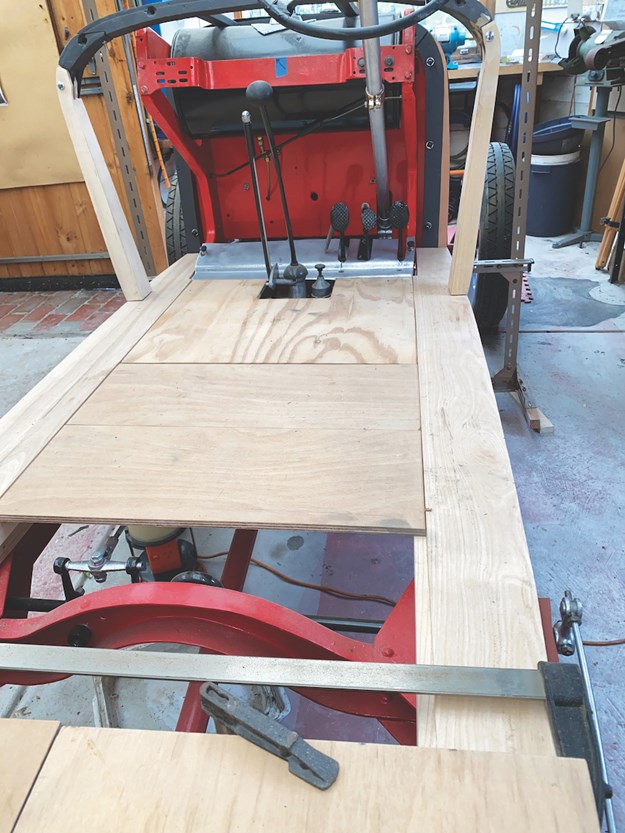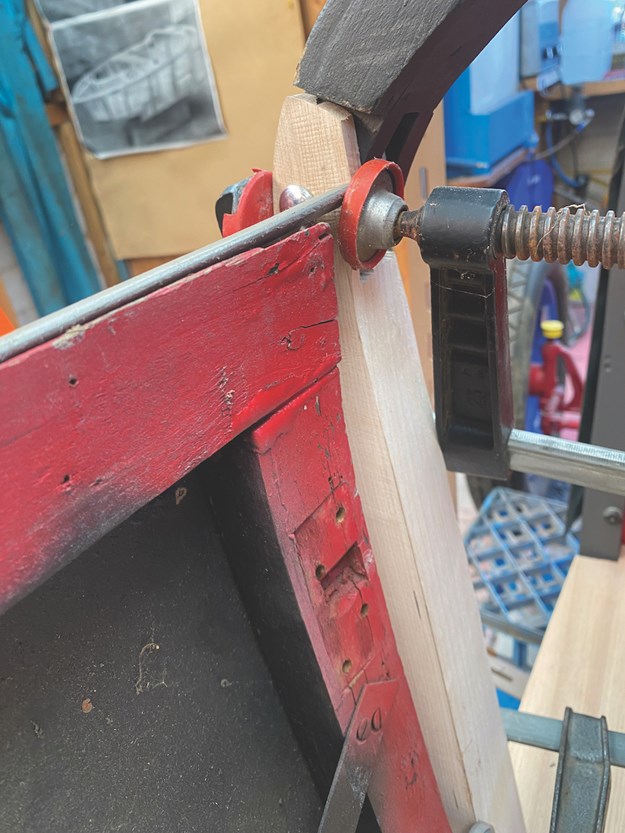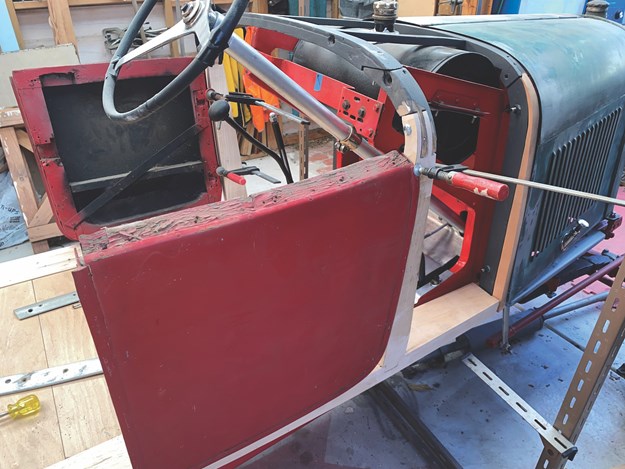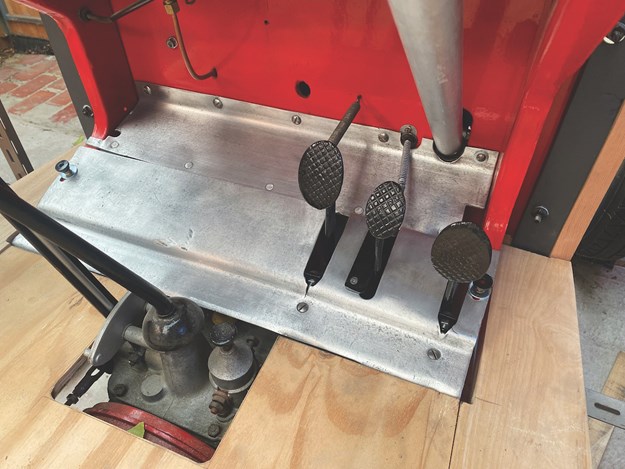Flawed floors - Faine #484
Jon is in awe of the craftsmen that created the B2 Caddy.

|
|
The car that Jon is making.
|
My respect for the carpenters wielding their spokeshaves and handsaws in the Citroen factory at Quai Javel, on the River Seine in Paris around a hundred years ago increases each time I try - and spectacularly fail - in my efforts to copy their output.
On my side in the battle, I have a shed full of power tools, sophisticated gadgets and lasers available to me. But I still cannot do even a bad impersonation of their work.
Maybe if I were to wear a beret and start dangling a smoky Gaulloise no-filter cigarette from the corner of my Beaujolais swigging mouth…
Despite the lack of proper personal accessories, I am making some progress on the 1926 Citroen B2 Caddy tribute.
Which is to say, I move the dust and wood shavings around and spend hours staring at the timber frame that I am rumoured to be building, wondering why the carefully laid-out plans pinned to the wall do not magically replicate themselves in the clean white-ash timber stacked in the corner of the workshop.
 |
| It seems to be more timber than metal. |
The last little while has seen the ‘A’ pillars finished, and ready to be screwed and glued. For a month I have held off taking that somewhat daunting step - I lack the confidence to permanently attach them to the base plates.
I am scared - nay, convinced - as soon as I drill the holes, insert the wood screws and stitch it all together with expensive fancy permanent bonding and gap-filling marine-quality glue, I’ll discover a fundamental flaw that until just that moment wasn’t evident.
I will then be stuck with either a distorted frame or some similarly ludicrously obvious catastrophic mistake.
Meanwhile, I am cross-checking what I am doing in timber with the components that have to fit in, made from metal. I have also managed to clean up, polish and attach the two floor plates.
 |
| Clamps, clamps and more clamps. |
They bridge the space in front and behind the pedal assembly, covering the bell housing. They attach at one end to the firewall and the other to the chassis plates. They scrubbed up well, and amazingly actually fit.
I had a chance to remind myself how to work my small single-phase ex-schoolroom lathe while replicating one of the threaded and knurled lugs that hold the floor plate down. Didn’t take off any skin or lose an eye, so that was quite the successful exercise.
The next challenge is to fill in the rest of the framing scaffold, starting with the ‘B’ pillars. Then it is a case of establishing the profiles of all the other timbers that flow towards the boat-tail tip, somewhere aft of the bench seat.
With a rush of blood that reminds me of how I felt as a schoolboy, when I discovered that the barber shop had risqué photos on the wall, I found a profile photo from a period Citroen factory ad showing that the tip of the boat-tail follows the same line as the bonnet mid-hinges.

It was my naïve expectation I could establish the exact eventual location and height of the tip of the boat-tail by simply running a level on a string from the bonnet hinges to the point 20cm aft of the body floor. This should equate to where my boat-tail body comes to its pointy end.
But when my second-hand laser level fired up, my plan, so simple in theory, proved useless in practice. The laser level showed the bonnet hinge line itself was not level.
Much pondering and wondering where I had gone wrong was soon resolved by the realisation that as the chassis is basically bare, it is sitting very high at the rear wheels.
There is no body with all of its weight to compress the rear leaf springs. So the car’s bum is sticking up in the air.

When I jacked up the front axle to get the bonnet-hinge line level, I could then pinpoint the boat-tail tip and mark it on a temporary jig clamped to the floor base.
The remaining side and top-rail timbers now all need to meet at that point and I can use string lines, some bent long lengths of aluminium rod or thin timber dowels to establish the missing profiles.
The two front doors from the old tourer body that once adorned this chassis, came with the wreck I bought years ago and gave me some rough guidance of the next step to be addressed.
 |
| The polished floor plates look neat. |
I thought about adapting the old doors - they are not the right size or shape for the sportier body I am making - but it will probably be easier to start from scratch and make two new ones.
Visually I can pretend I am making progress by popping them into place and standing back to admire my lack of skill and progress.
From Unique Cars #484, Oct 2023
Unique Cars magazine Value Guides
Sell your car for free right here
Get your monthly fix of news, reviews and stories on the greatest cars and minds in the automotive world.
Subscribe

.jpg)













